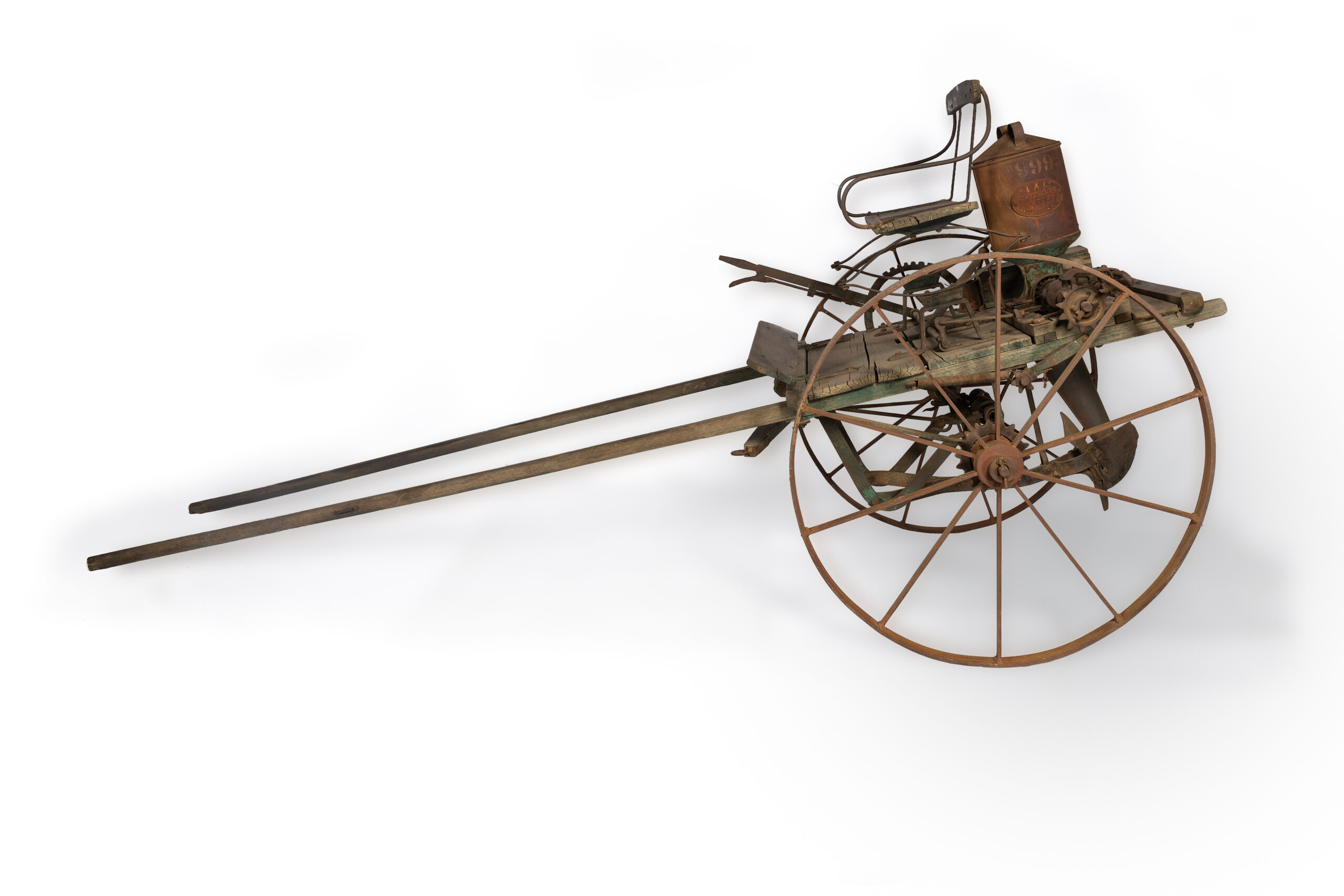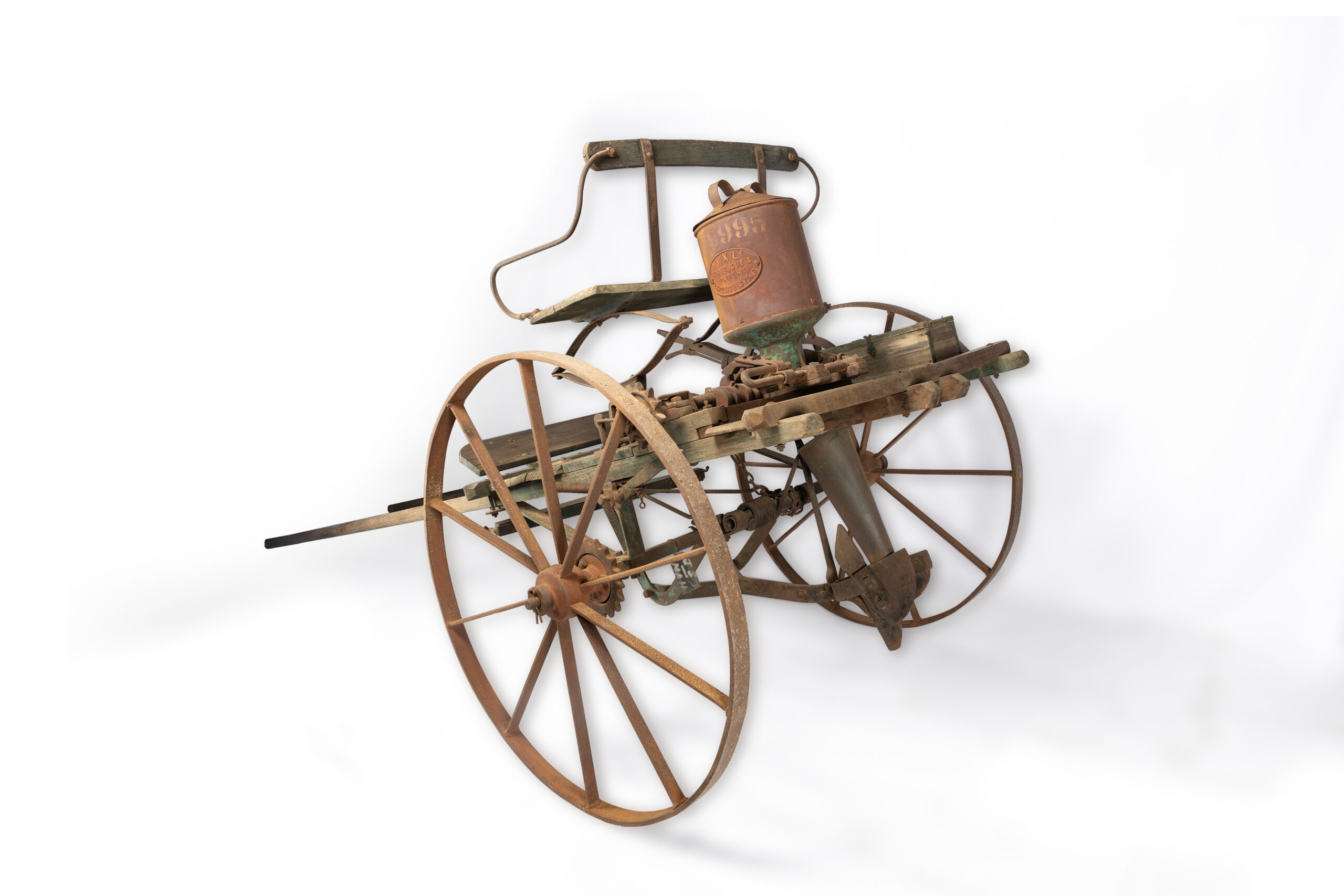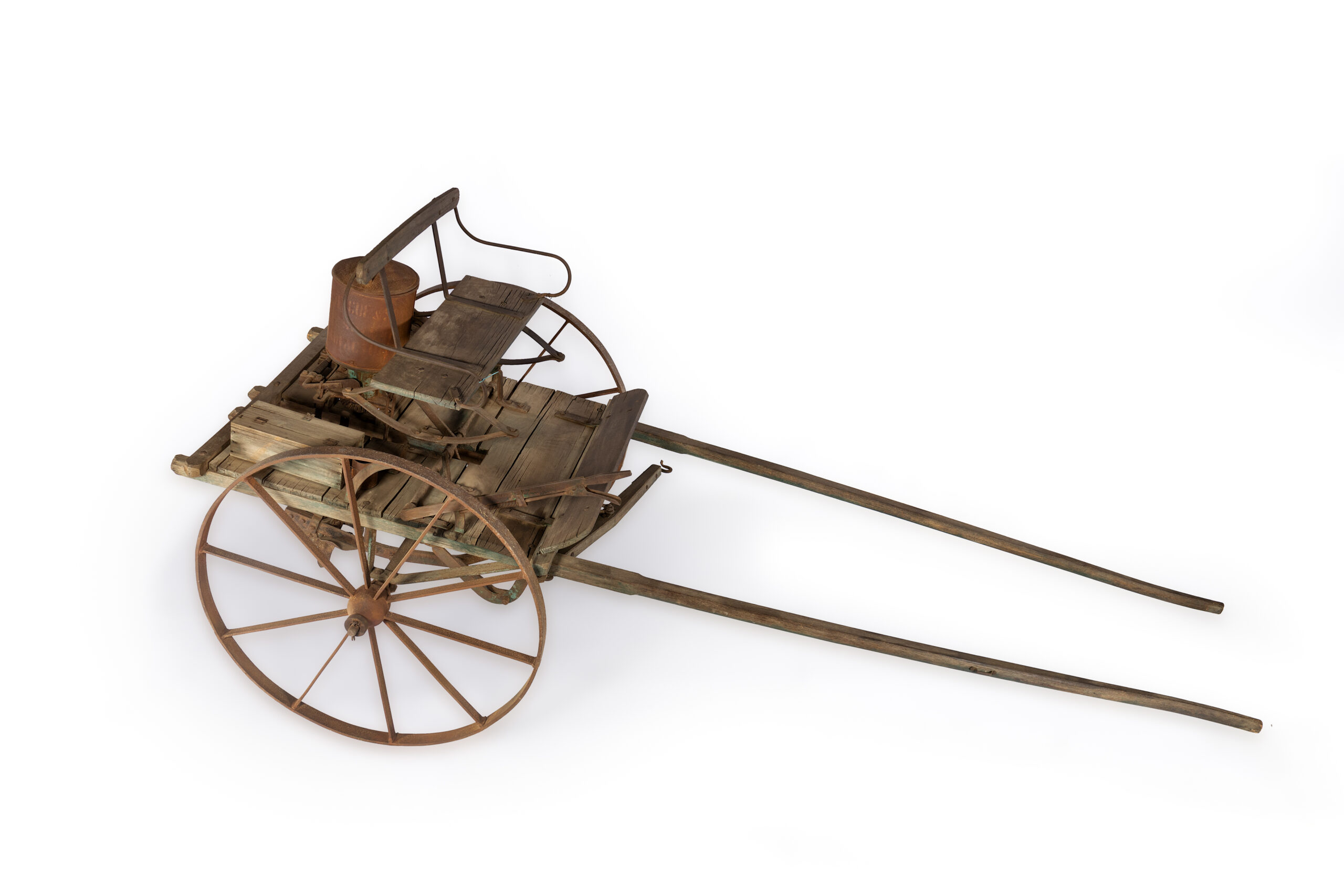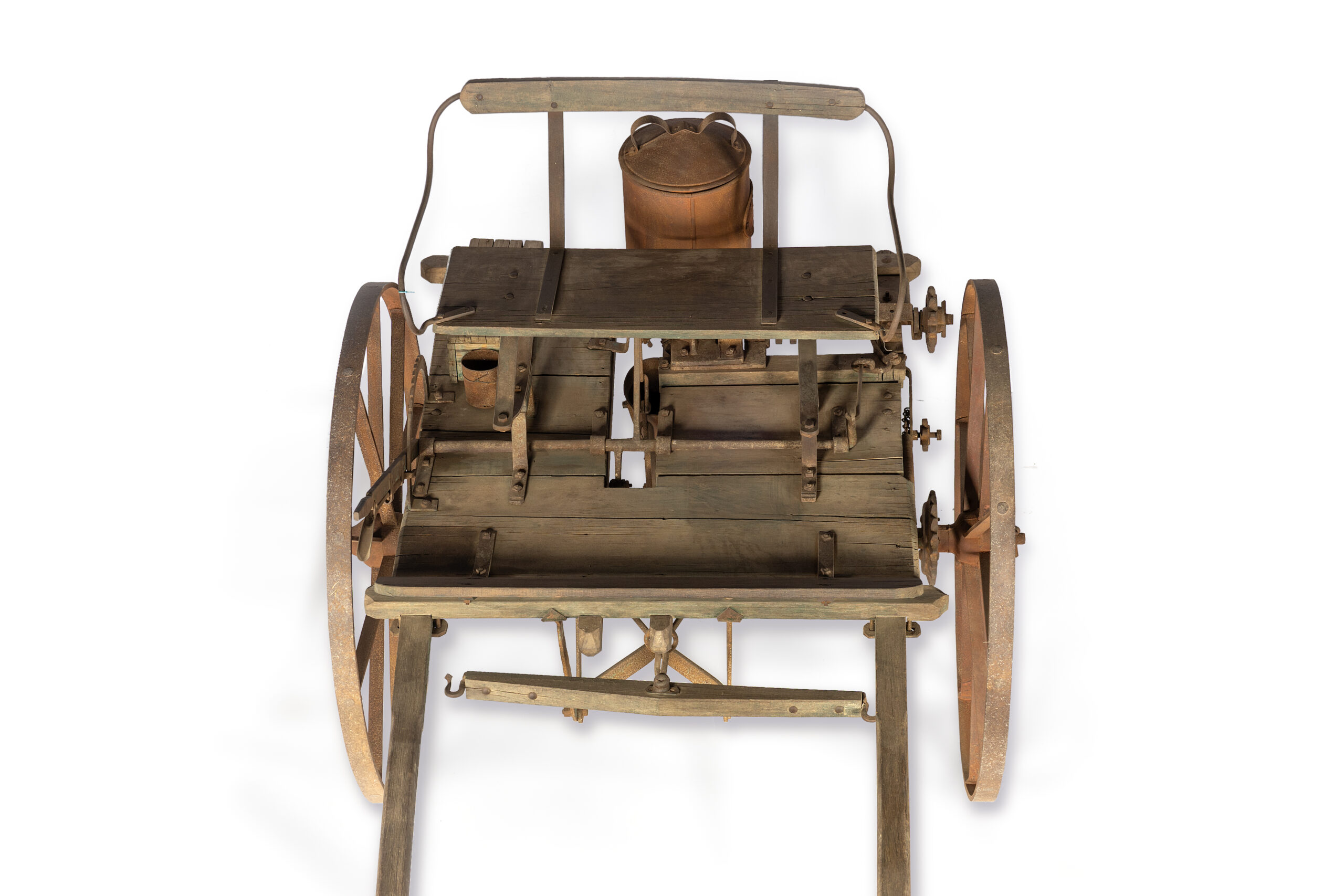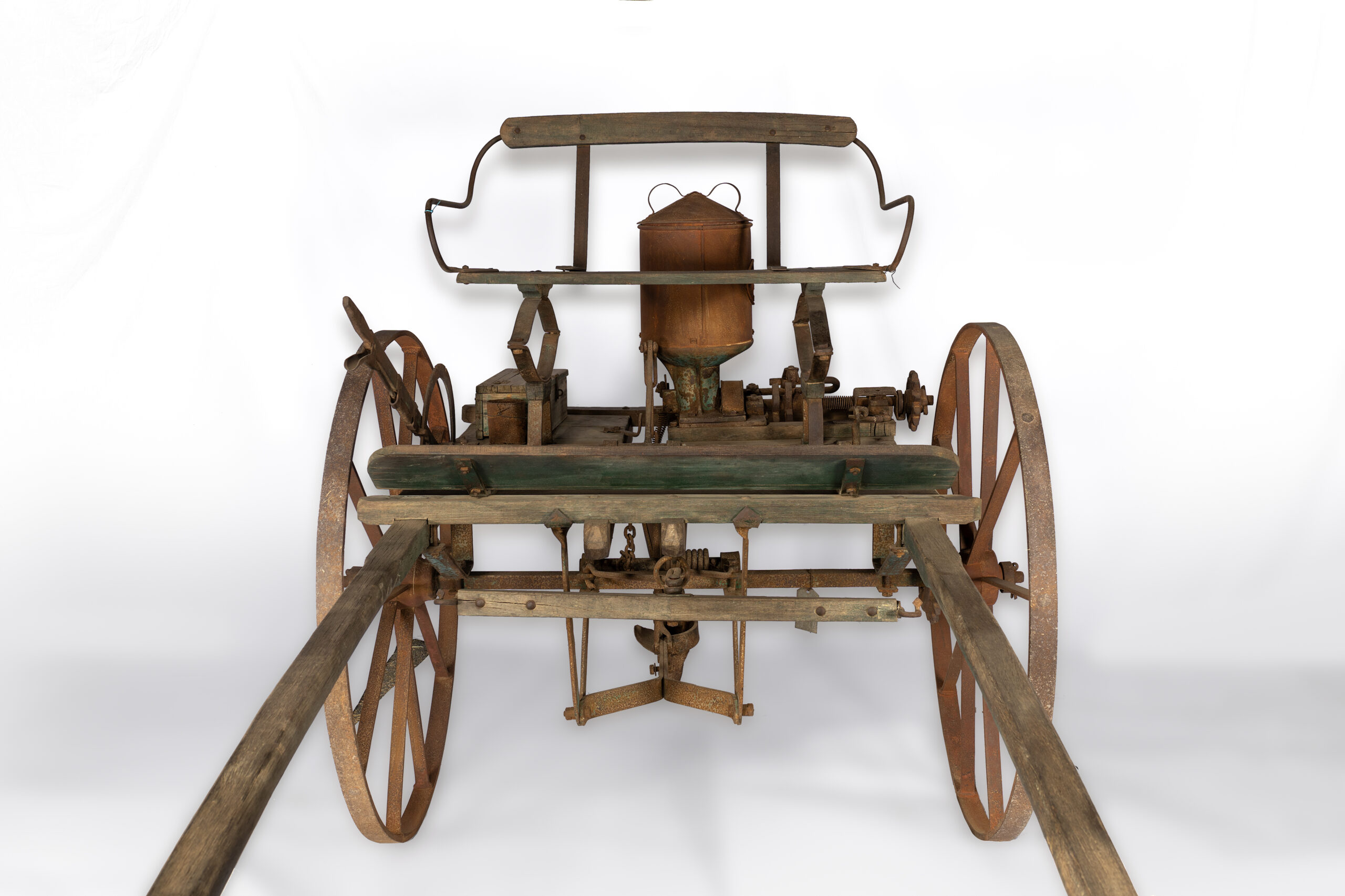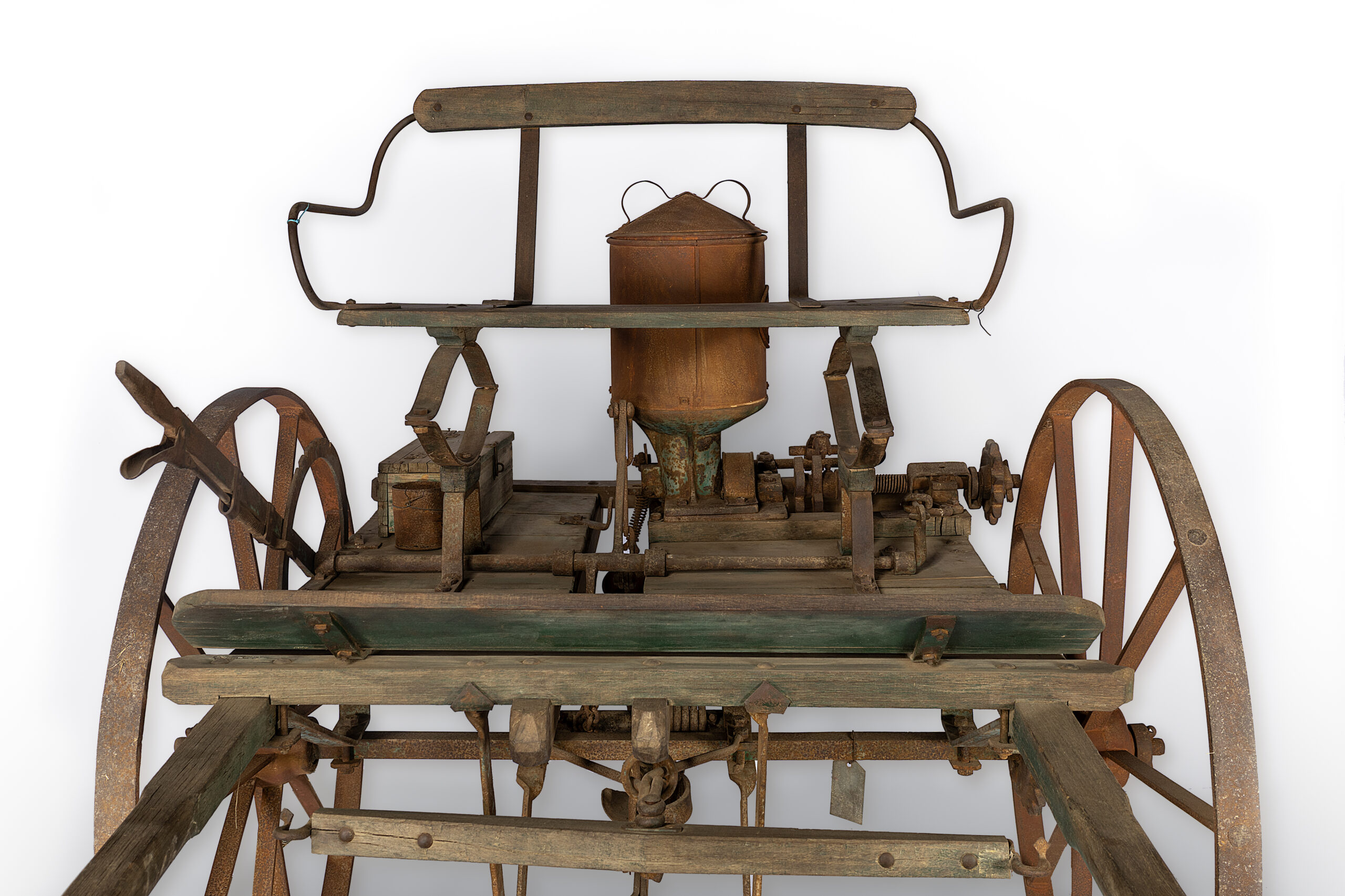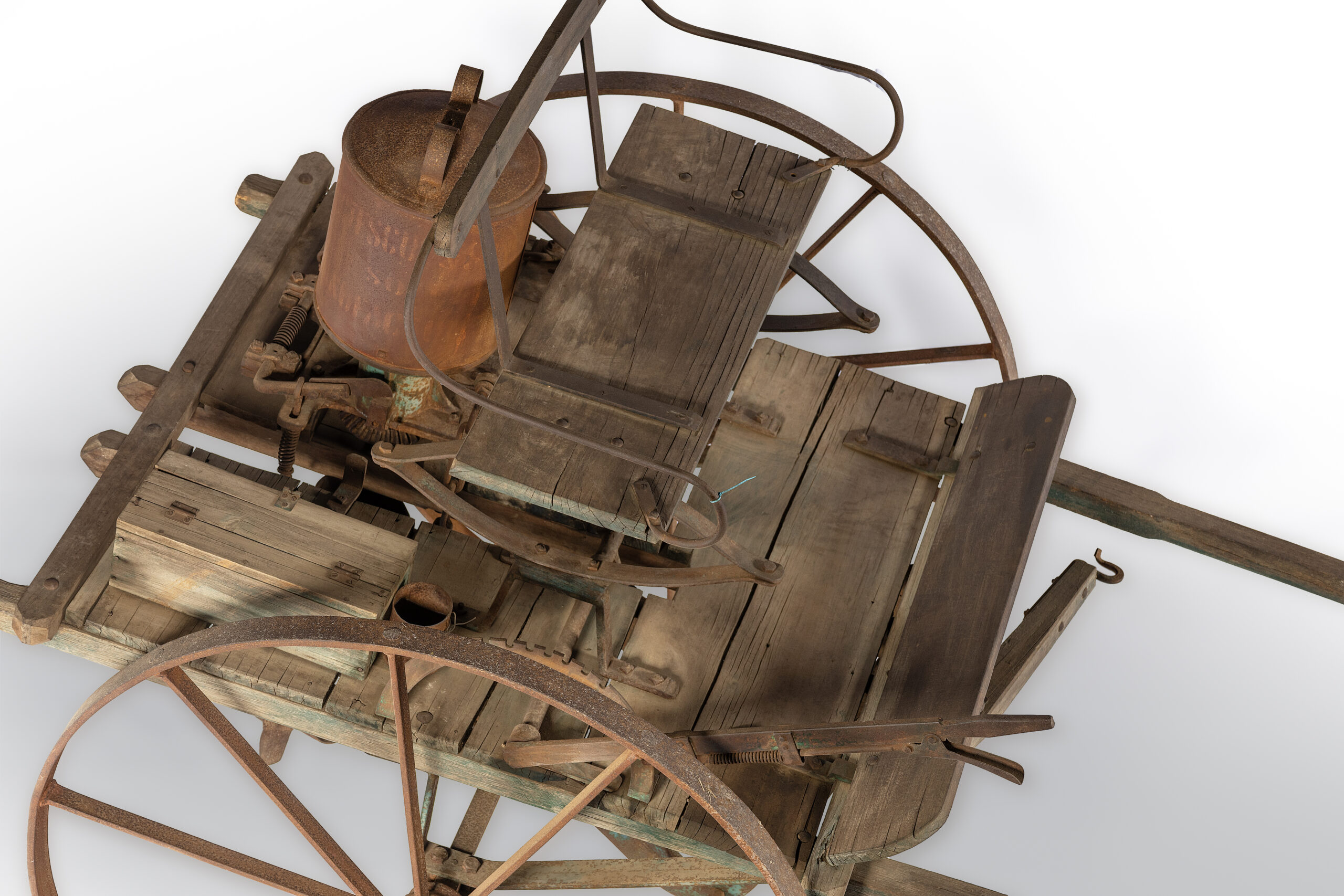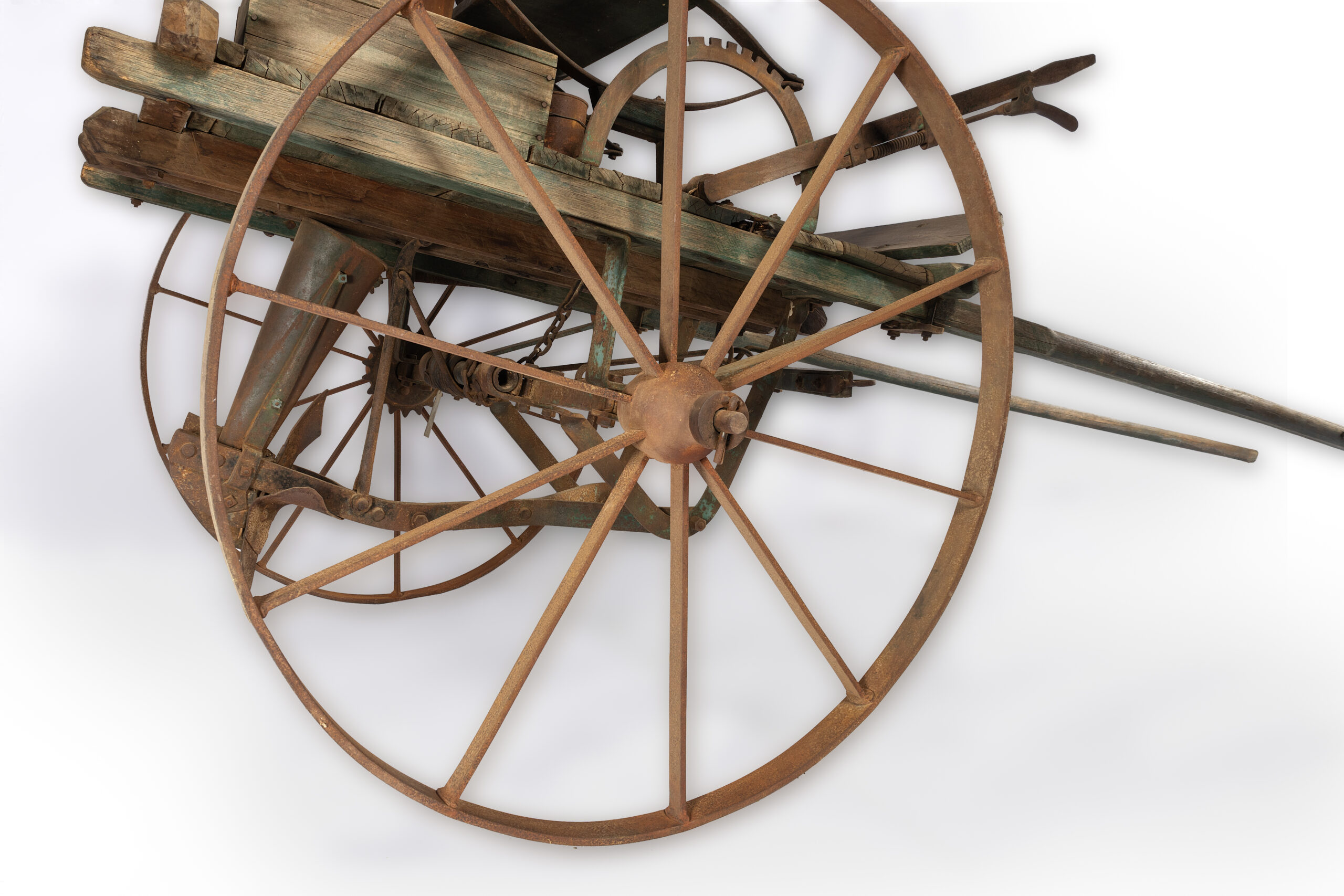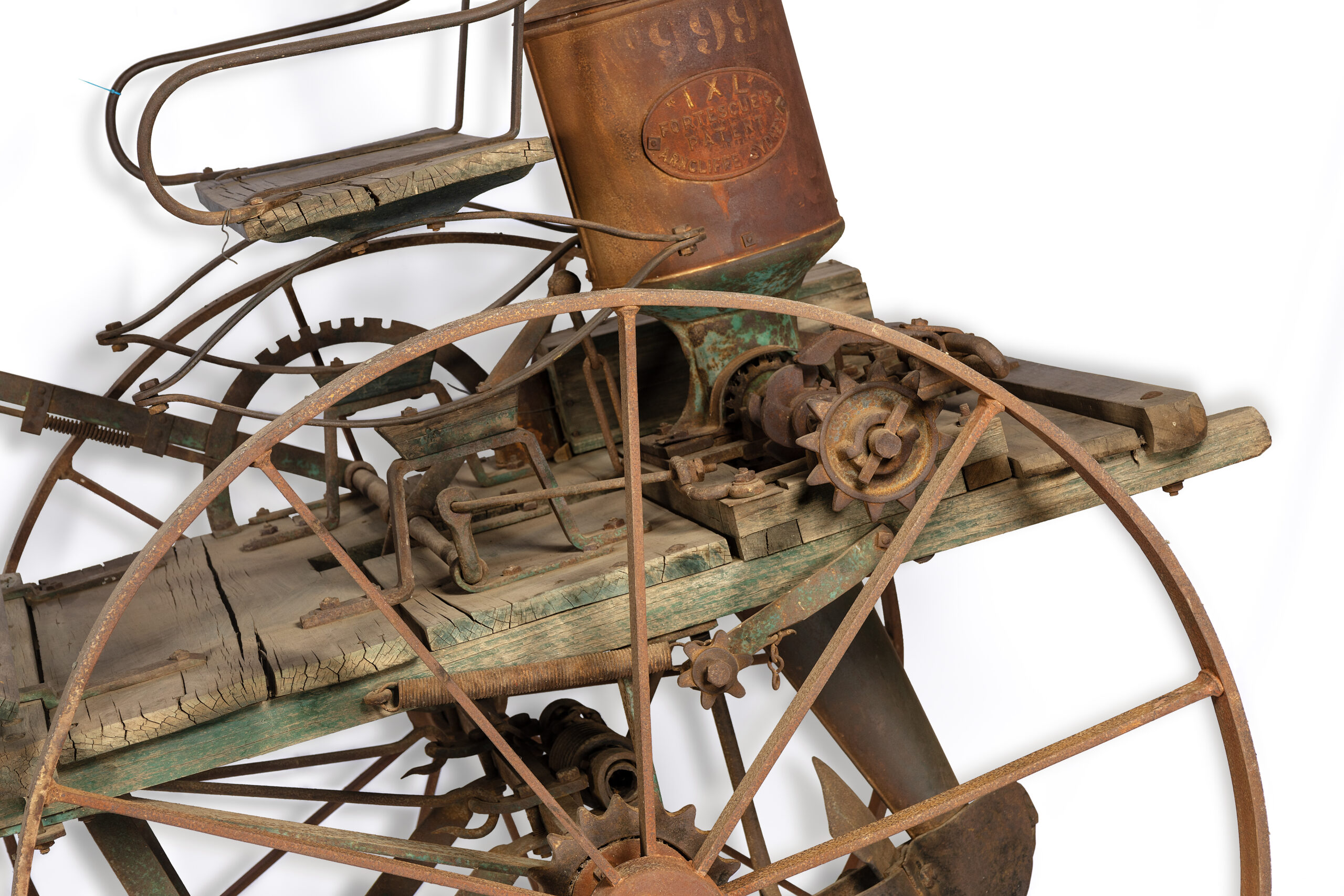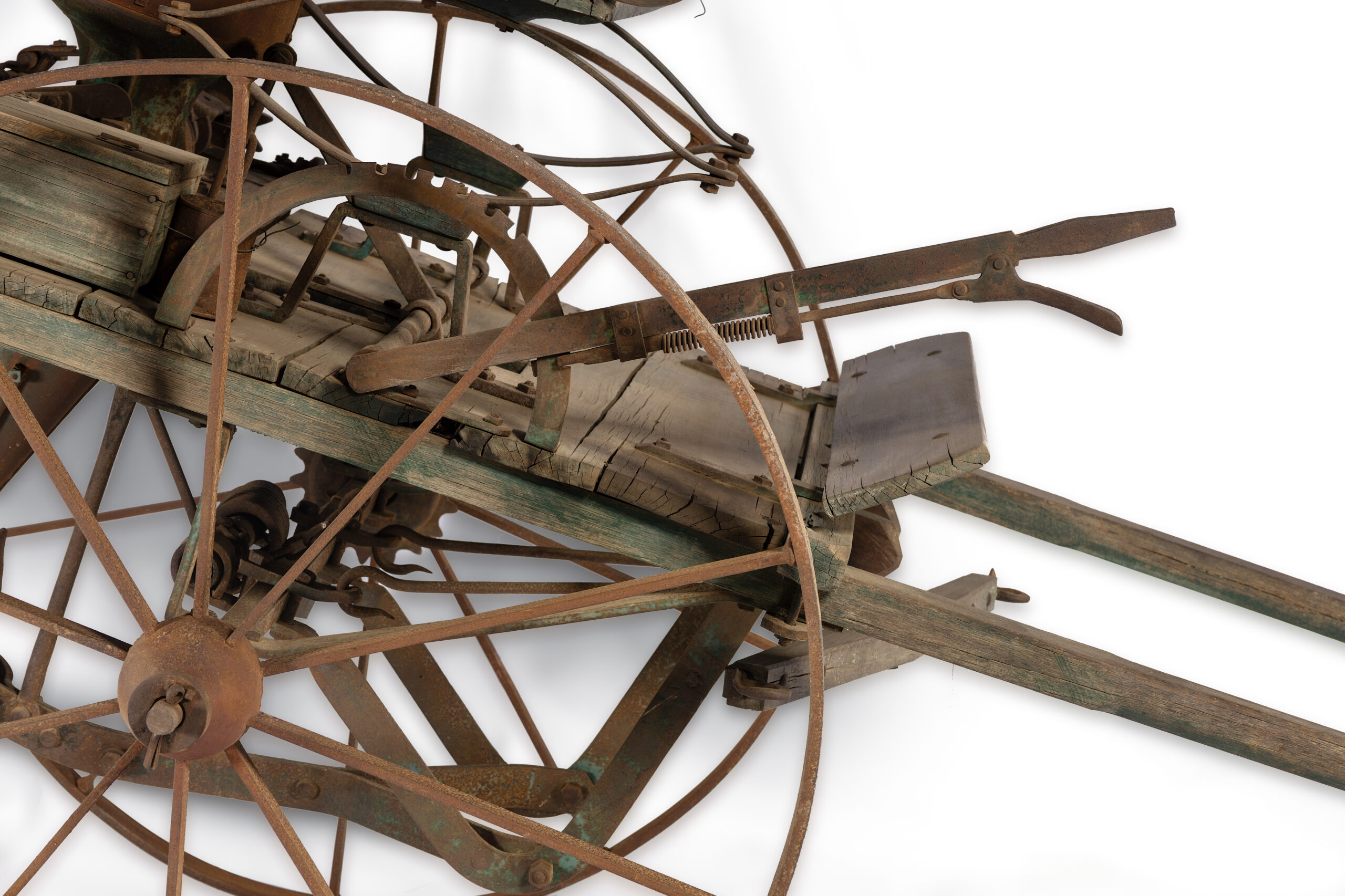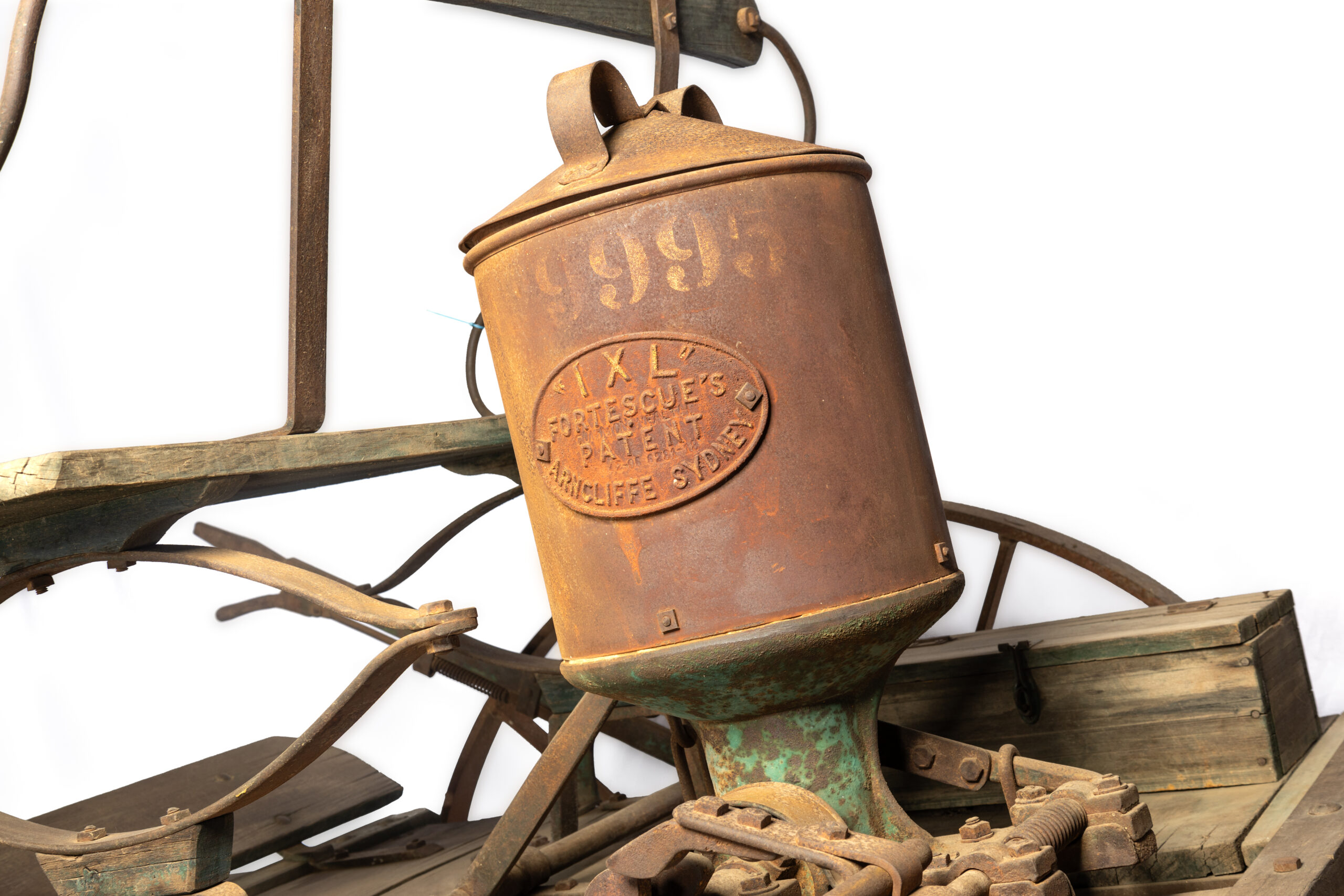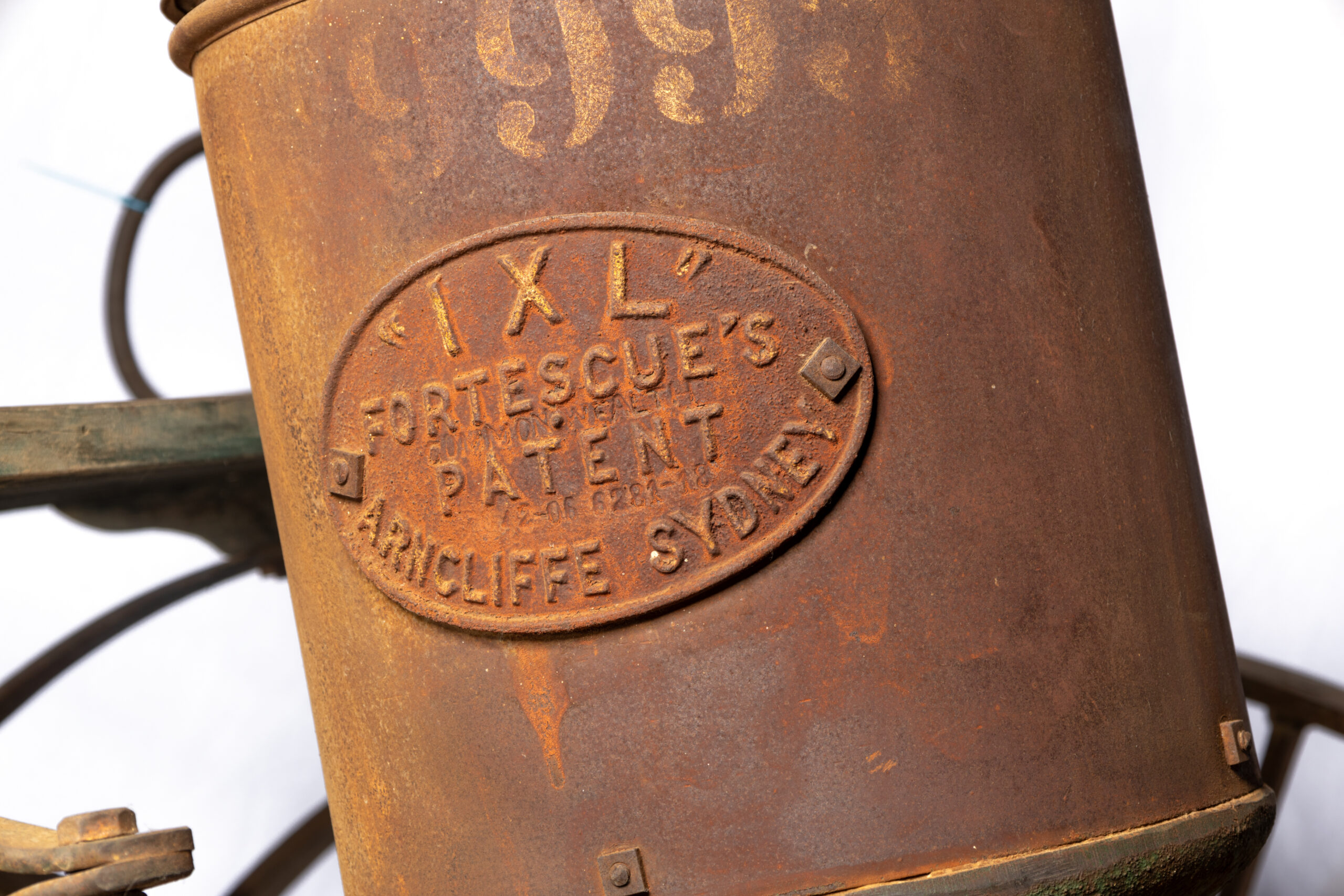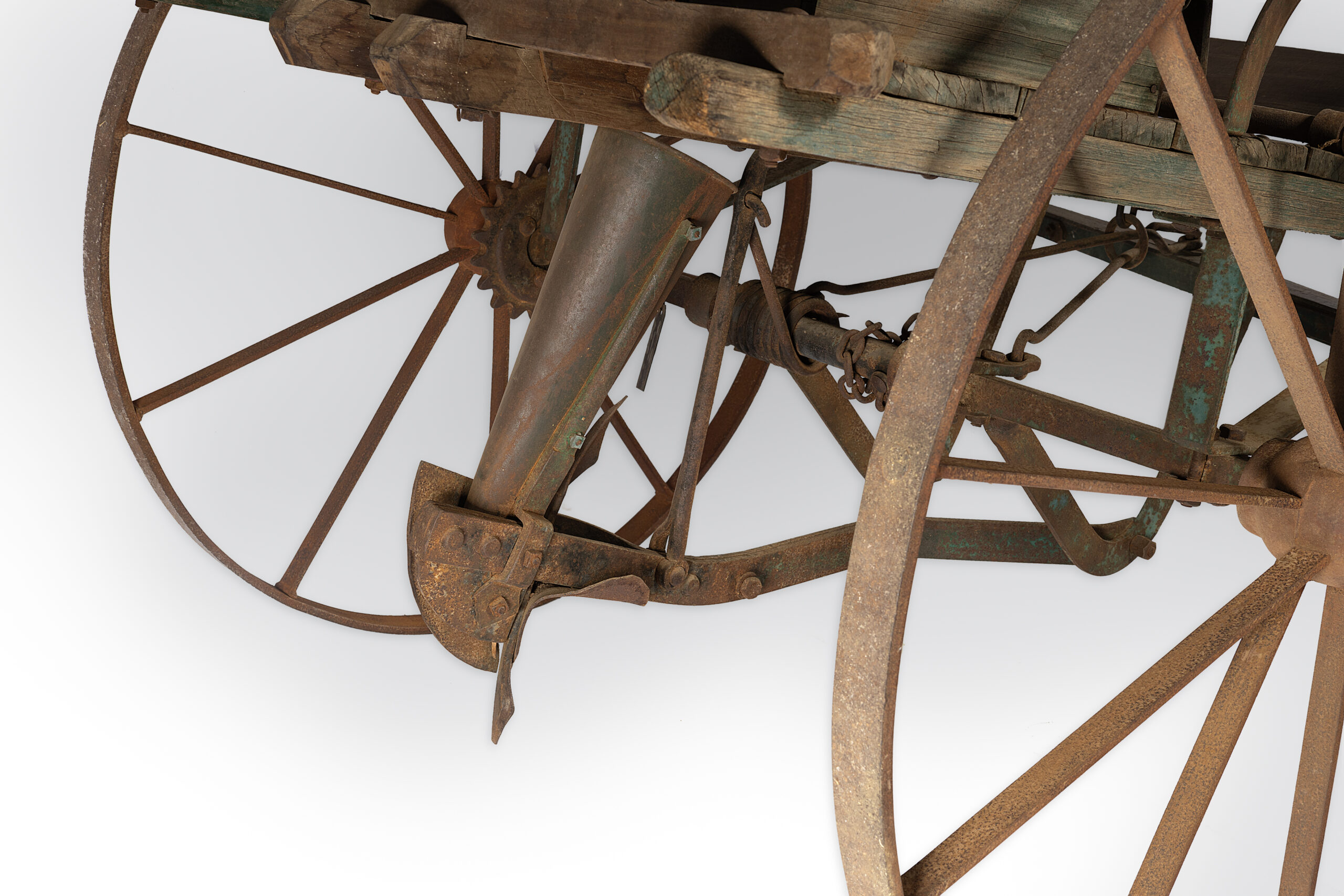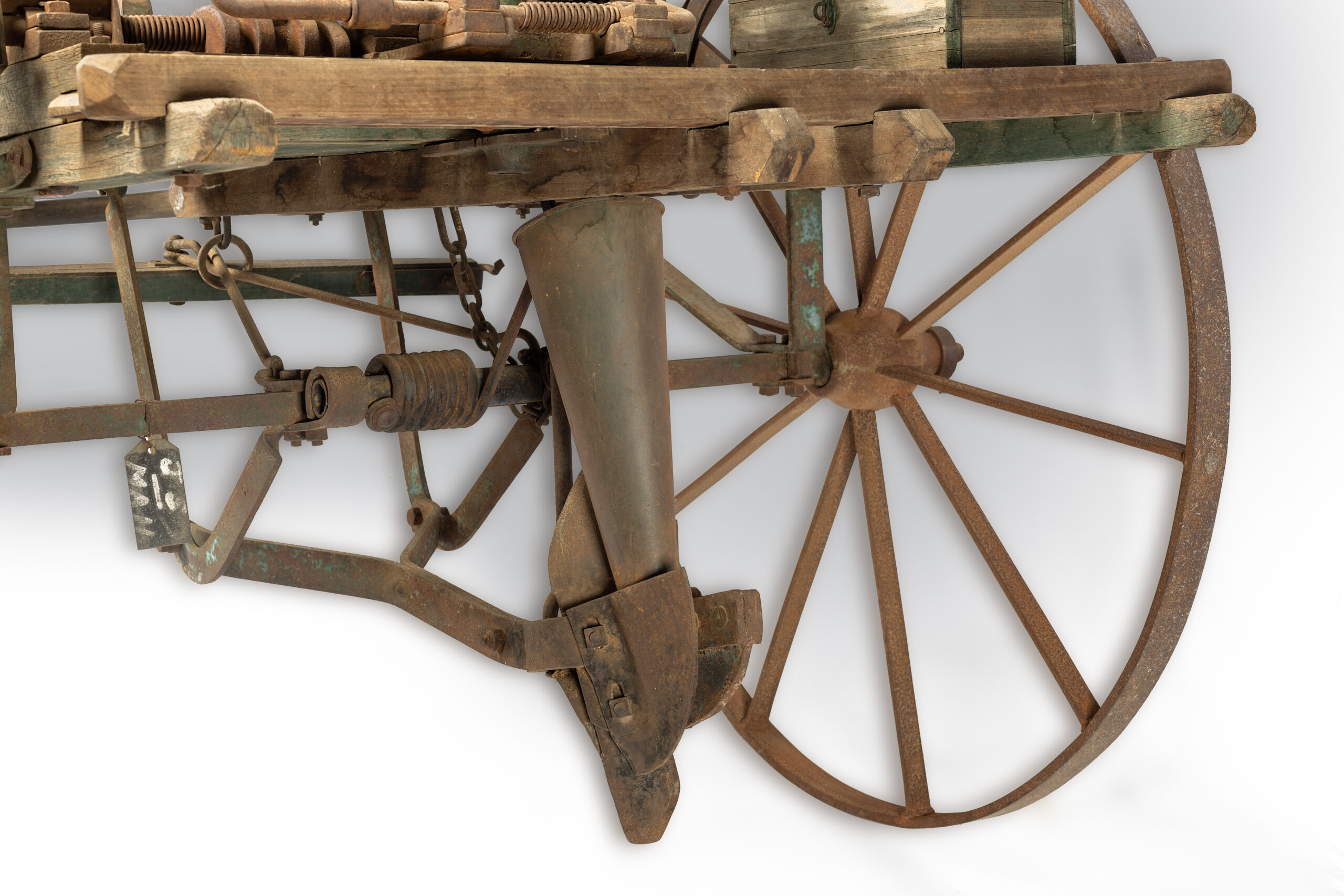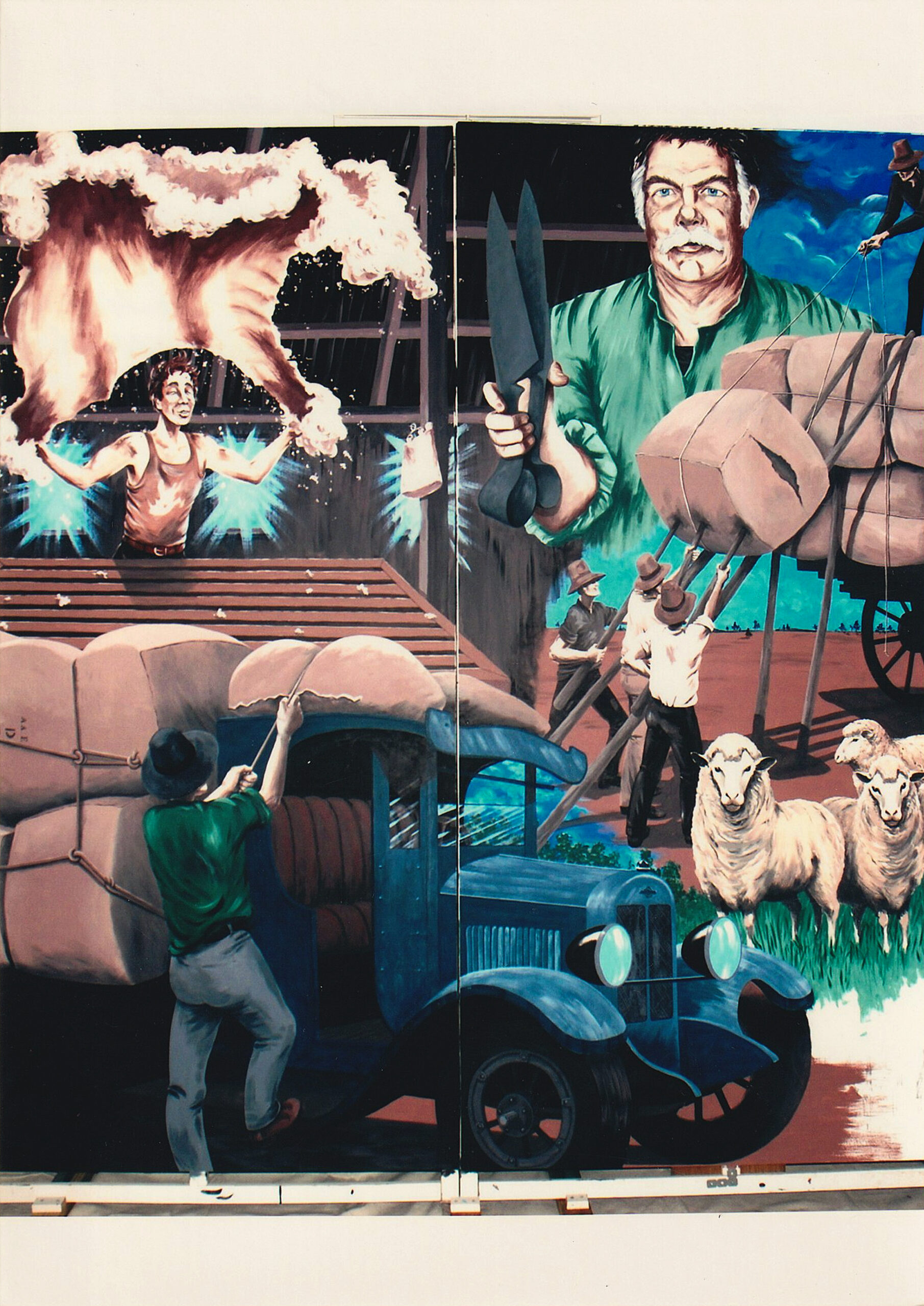Plowing Through a Plague
Fortescue's Rabbit Poisoning Machine
In the early 1900s, the newly minted nation of Australia was besieged by a plague of rabbits. The fleet-footed creatures knew no borders and their spread had been unwittingly assisted by pastoralists waging war on dingoes, which had removed a predator from the food chain. Used in Spring Plains, near Narrabri, in the 1920s, this ‘Special Sulky’ model rabbit poisoning machine was one of more than 10,000 carts manufactured by Fortescue & Sons in the Sydney suburb of Arncliffe between 1906 and 1936.
Mounted with a dispensing machine, the cart ploughed shallow furrows dispensing phosphorous-laced paste at regular intervals then lightly covering the poison with soil.
Fortescue’s alarming claim that ‘any small boy can use [the cart],’ may seem odd today but the emphasis was more likely on the machine’s light weight than the suggestion that minors should be armed with poison-laced molasses and put to work in the fields.
The herbivorous invasion was both a blessing and a curse; rabbit meat and fur were in demand during World War I, and the need continued into the Depression. They were a commodity which belonged to no one and were accessible to all. Canning factories sprang up, and rabbits were sometimes a more reliable source of income than livestock, which suffered during periods of drought.
Poison carts were the trappers’ bane, and they actively tried to impede their popularity, but pastoralists eventually prevailed. The myxomatosis virus escaped during CSIRO trials in 1950, and within three years, rabbit populations, along with the industries that sprang up with them, had collapsed.



